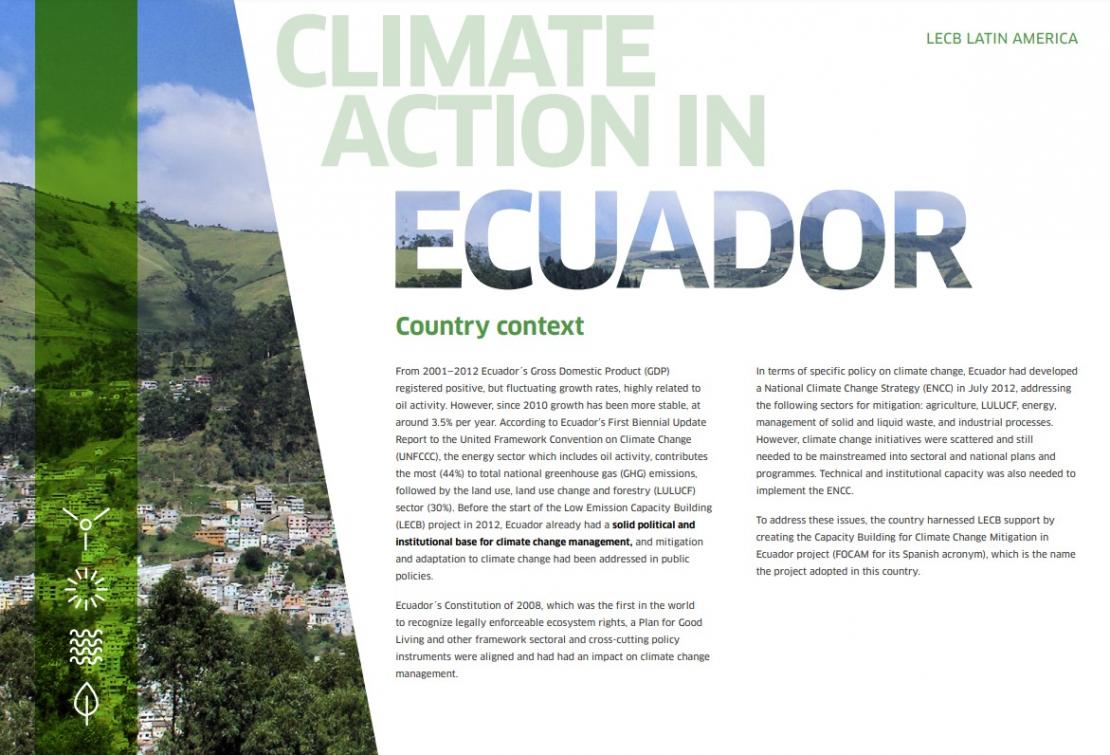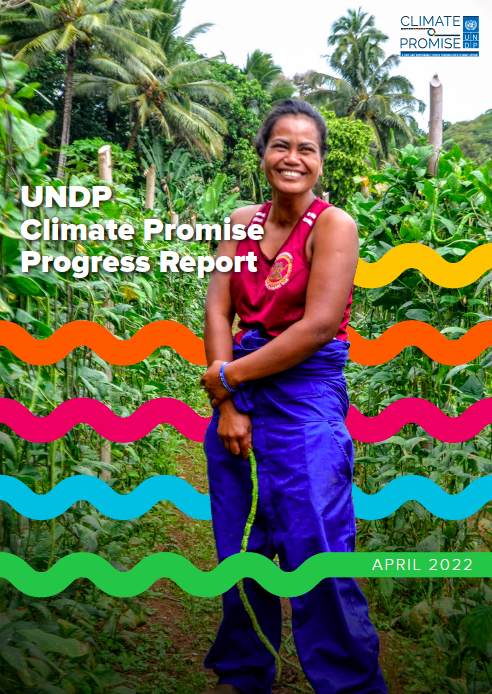LECB Programme Impact and Results: Ecuador

Before the start of the Low Emission Capacity Building (LECB) project in 2012, Ecuador already had a solid political and institutional base for climate change management, and mitigation and adaptation to climate change had been addressed in public policies. Ecuador´s Constitution of 2008, which was the first in the world to recognize legally enforceable ecosystem rights, a Plan for Good Living and other framework sectoral and cross-cutting policy instruments were aligned and had had an impact on climate change management.
In terms of specific policy on climate change, Ecuador had developed a National Climate Change Strategy (ENCC) in July 2012, addressing the following sectors for mitigation: agriculture, LULUCF, energy, management of solid and liquid waste, and industrial processes. However, climate change initiatives were scattered and still needed to be mainstreamed into sectoral and national plans and programmes. Technical and institutional capacity was also needed to implement the ENCC. To address these issues, the country harnessed LECB support by creating the Capacity Building for Climate Change Mitigation in Ecuador project (FOCAM for its Spanish acronym), which is the name the project adopted in this country.


